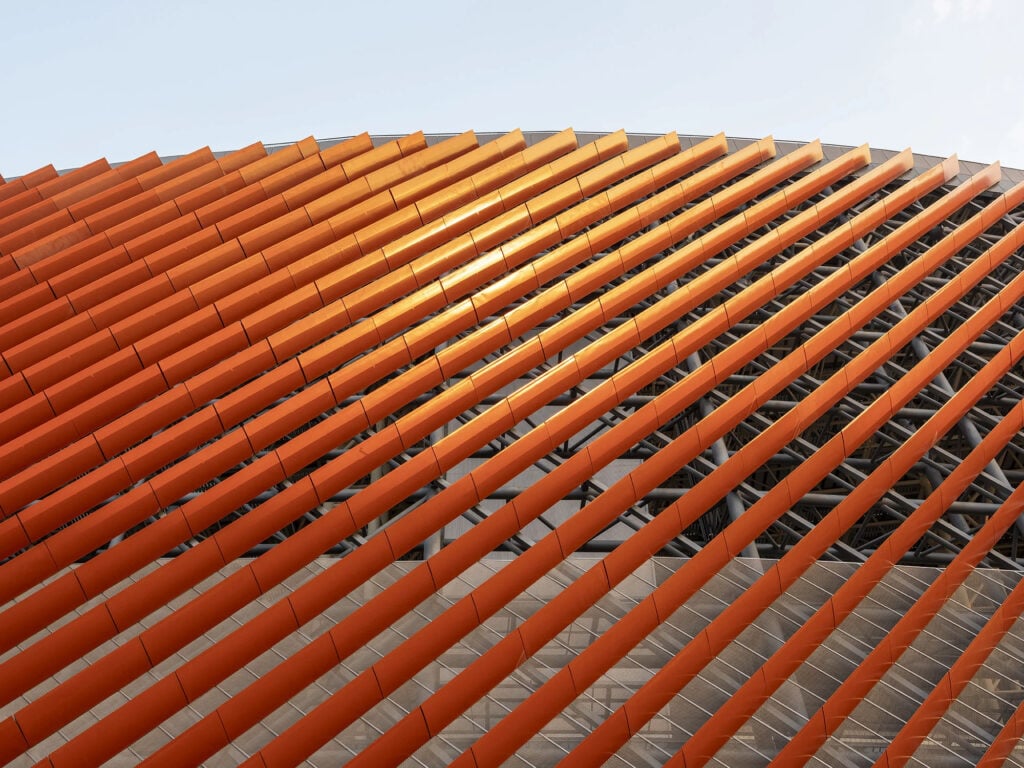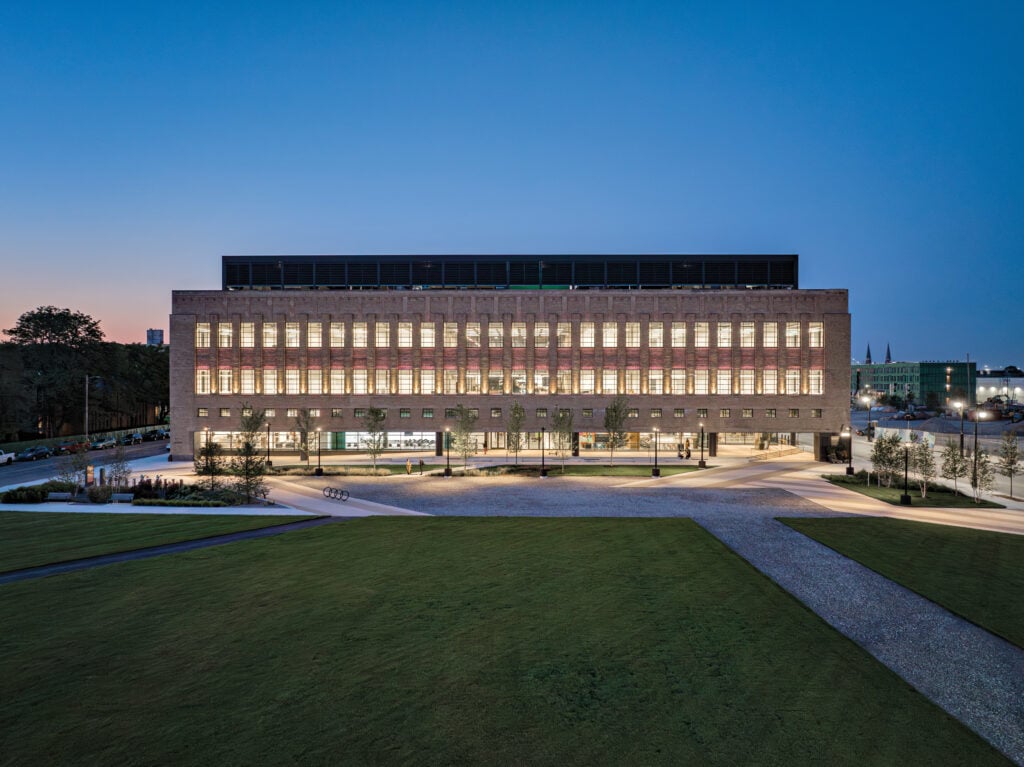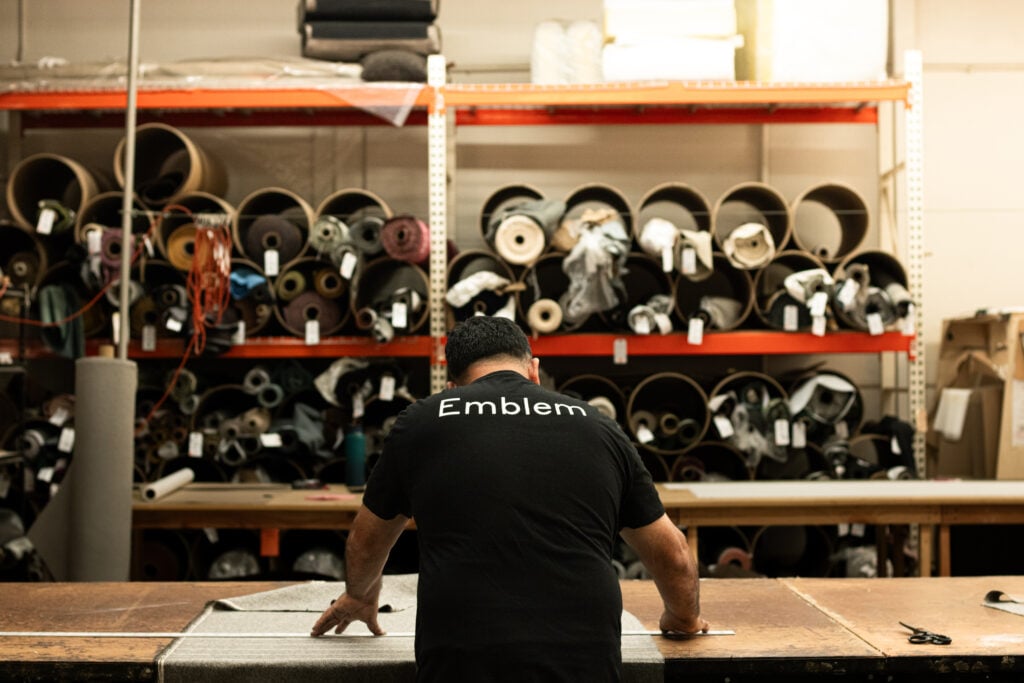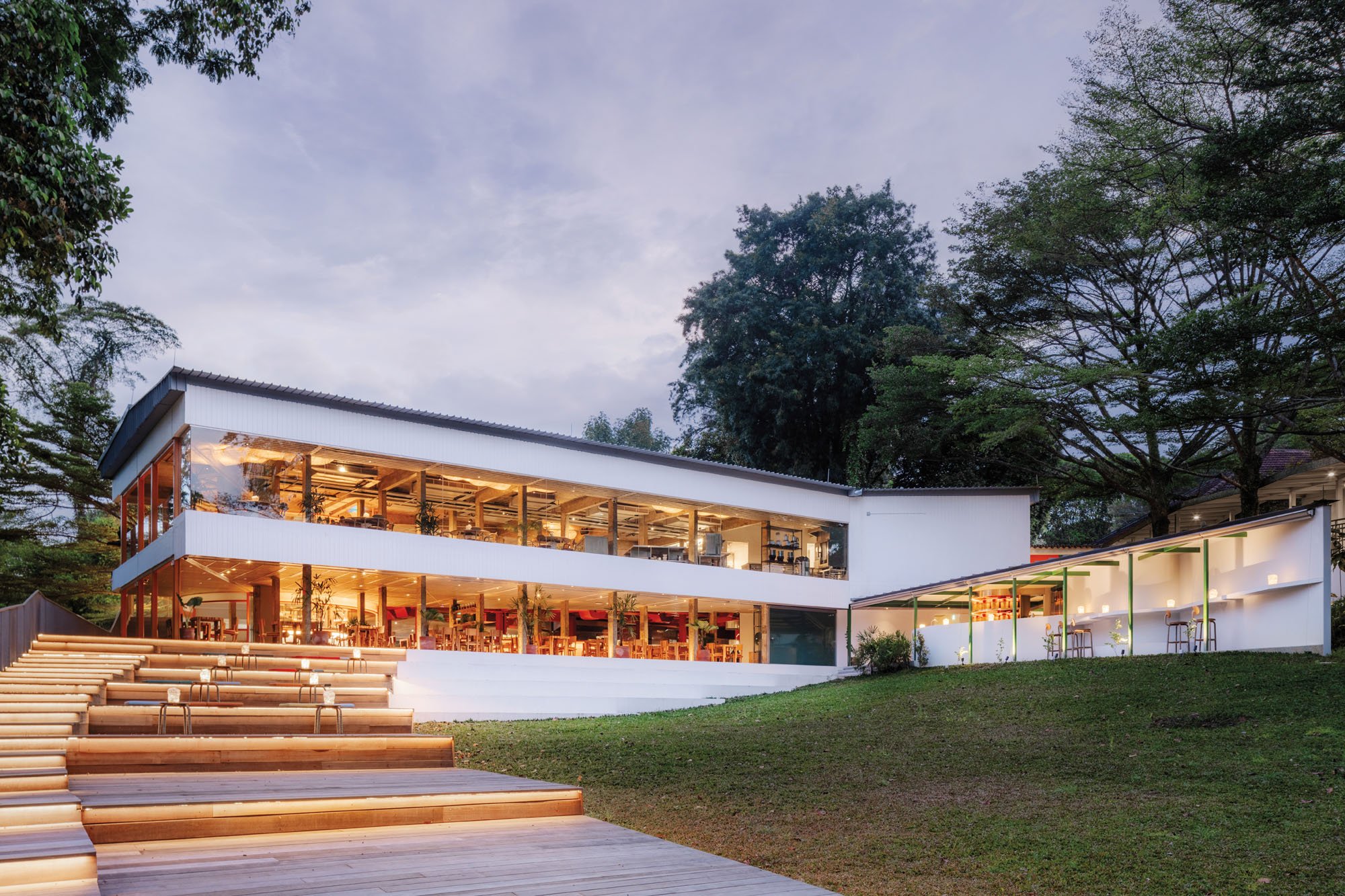
June 12, 2024
OMA-designed AIR Circular Campus and Cooking Club Has Opened in Singapore
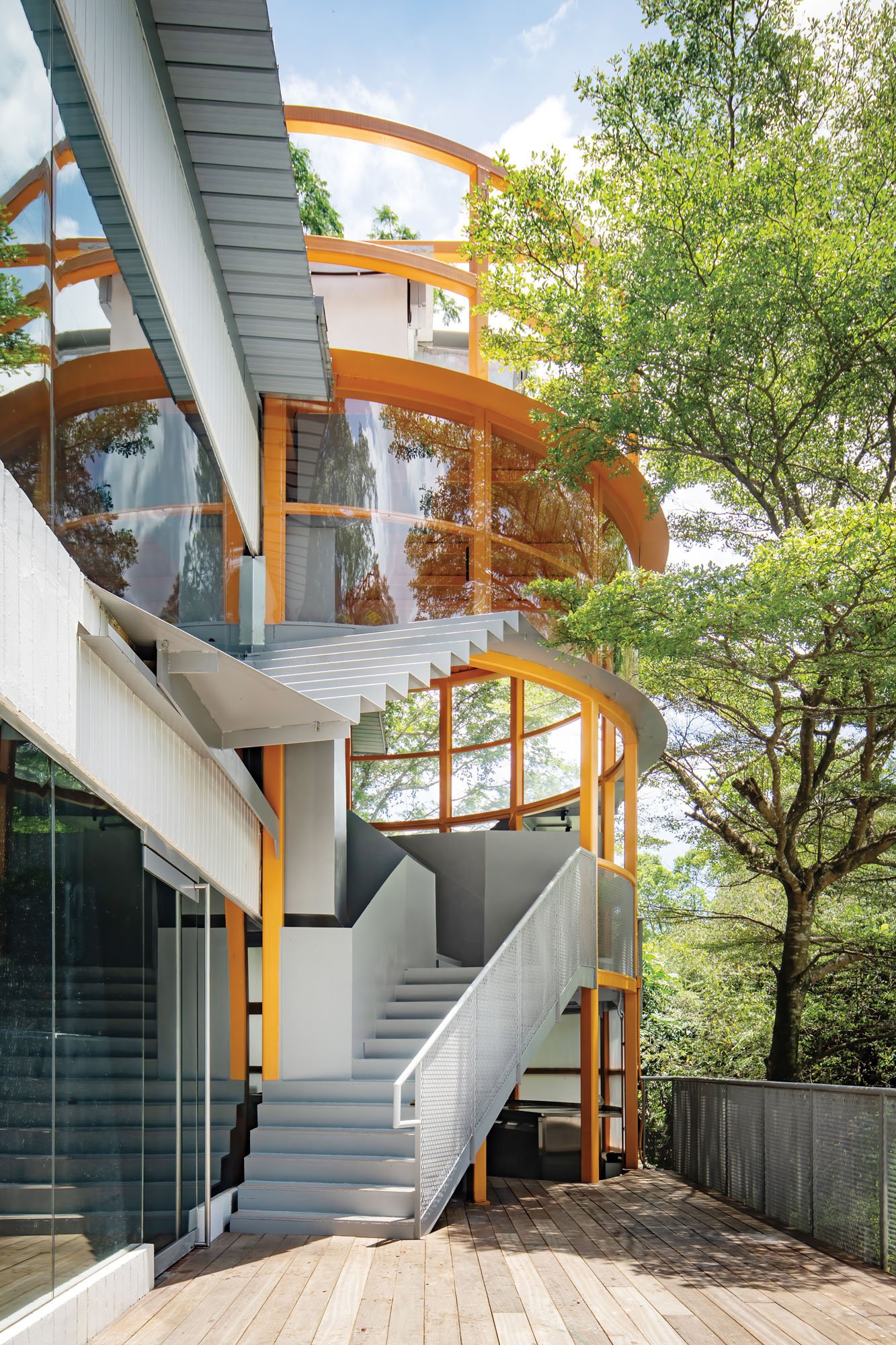

That use lasted just a few years, however, and in 1975 the clubhouse relocated. The building was only intermittently occupied, with extended spells of disuse, until Jakarta, Indonesia–born hospitality entrepreneur Ronald Akili and global architecture firm OMA decided to reimagine it. (OMA and Akili’s lifestyle brand, Potato Head, have nurtured a decadelong, ongoing collaboration, working on projects that advance a more conscious, contextual form of luxury.)
AIR Circular Campus and Cooking Club, as the 40,000-square-foot complex is called, gathers an array of food-centric functions in the matlike building—restaurant, open kitchen, open-air bar, cooking club, and fermentation lab—that looks out onto a well-tended lawn and small agricultural space with a compost shed. By uniting and making legible the intertwined processes of food production, consumption, and waste, AIR aims to educate visitors about how principles like circularity can help create what ends up on their dinner plates.
The project was, in essence, one of gentle refurbishment and reorientation, with a handful of small yet consequential design moves that serve to embed AIR within its surroundings—climatically, spatially, and even experientially. “The biggest architectural move we’ve done is to turn the front and the back around,” says David Gianotten, partner at OMA, who, with associate in charge Shinji Takagi, led the design. Now the building faces the neighborhood’s main thoroughfare, while in the rear OMA introduced an orange-framed, glassed-in staircase that connects the two levels and opens out toward Dempsey Hill.

The intervention’s other parti was the creation of a winding 328-foot path that brings visitors from the downhill parking lot across the lawn to the building, offering an escalating approach. “It also cuts through the building,” Gianotten notes, where it links up with the back stairs, helping cohere AIR’s functions and create a relaxed seamlessness.
Through decades of sporadic use and disuse, the building buckled under Singapore’s tropical climate—and its full glazing and a lack of air-conditioning exacerbated the problem, sealing humidity in and keeping fresh air out. “When we found it, the interior was completely deteriorated,” Gianotten recalls. Singapore allowed a full-scale demolition, but “that would have obviously been against the sustainability approach of Potato Head,” he added. So the design team decided to preserve most of the structural elements and just allow the space to be opened up a bit instead, to take advantage of what Gianotten calls “the preferred winds” of Dempsey Hill—among the breeziest in Singapore. The entire ground-floor dining area can be opened up, and the second floor, home to the cooking club and more formal dining area, has a balcony along the east elevation, with a full-length ribbon window that faces the lawn.
While the rehabbed campus certainly reflects bits of Singapore’s and Dempsey Hill’s transformations from military outpost to upscale global destination, it also distills aspects of contemporary dining culture, where circularity, sustainability, and education are increasingly the watchwords. At AIR, after fresh ingredients are picked on-site, they may be prepared in the open kitchen, jarred up at the fermentation lab, used in a demo for the cooking club, or included in a basket for picnickers. “It’s related to bringing the conscious mind onto society,” Gianotten says, “but also allowing people to have a good time.”
Would you like to comment on this article? Send your thoughts to: [email protected]
Latest
Viewpoints
How Can We Design Buildings to Heal, Not Harm?
Jason McLennan—regenerative design pioneer and chief sustainability officer at Perkins&Will—on creating buildings that restore, replenish, and revive the natural world.
Products
Behind the Fine Art and Science of Glazing
Architects today are thinking beyond the curtain wall, using glass to deliver high energy performance and better comfort in a variety of buildings.
Profiles
Inside Three SoCal Design Workshops Where Craft and Sustainability Meet
With a vertically integrated approach, RAD furniture, Cerno, and Emblem are making design more durable, adaptable, and resource conscious.





